Top 15 Brown Chicken Breeds: All Beginner-Friendly
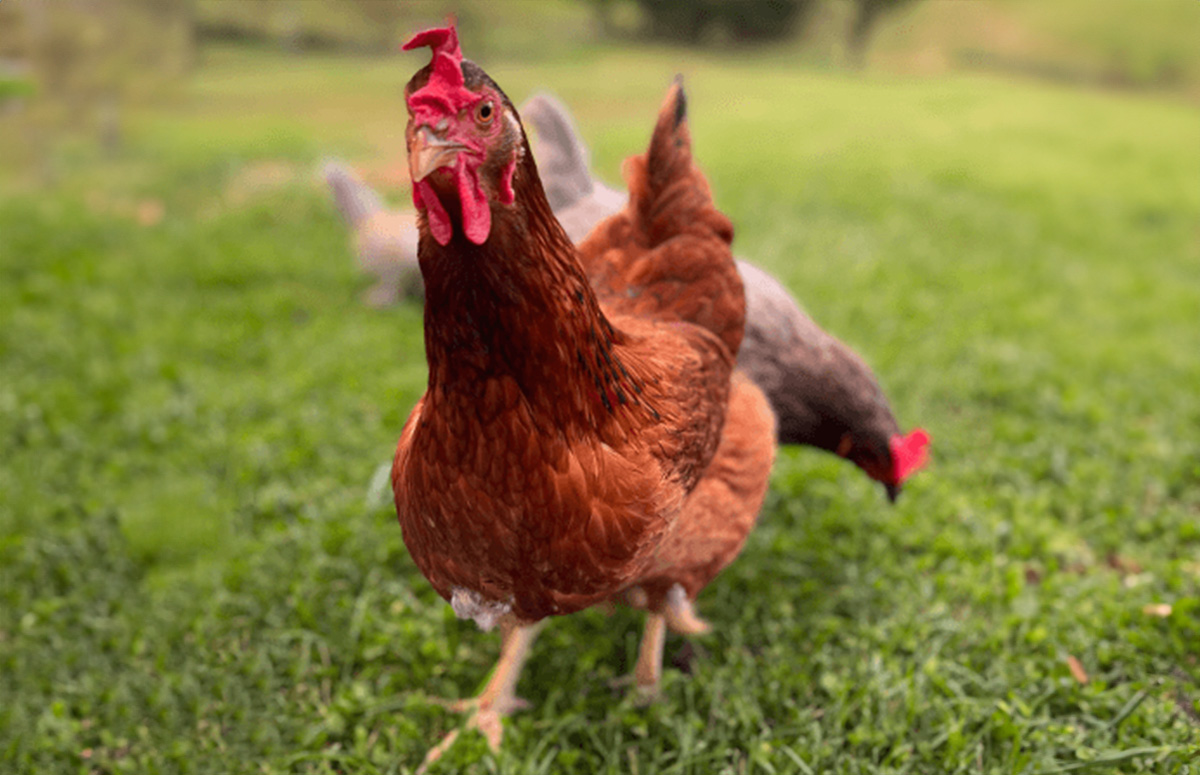
Brown chicken breeds are very popular, whether common or rare. If you’re looking for a beginner-friendly chicken and a great egg layer, you can’t go wrong with the brown chickens from our list.
With their friendly personalities and earthy feather colors, these brown chickens are popular among chicken keepers everywhere.
Here is our Top 15: Brown Chicken Breeds:
- ISA Brown
- Calico Princess
- Cinnamon Queen
- Golden Comet
- Rhode Island Red
- Hampbar
- Olive Egger
- Easter Egger
- Cream Legbar
- Vorwerk
- Brown Leghorn
- Buff Silkie
- Buff Orpington
- Salmon Faverolles
- Golden Laced Polish
1. ISA Brown
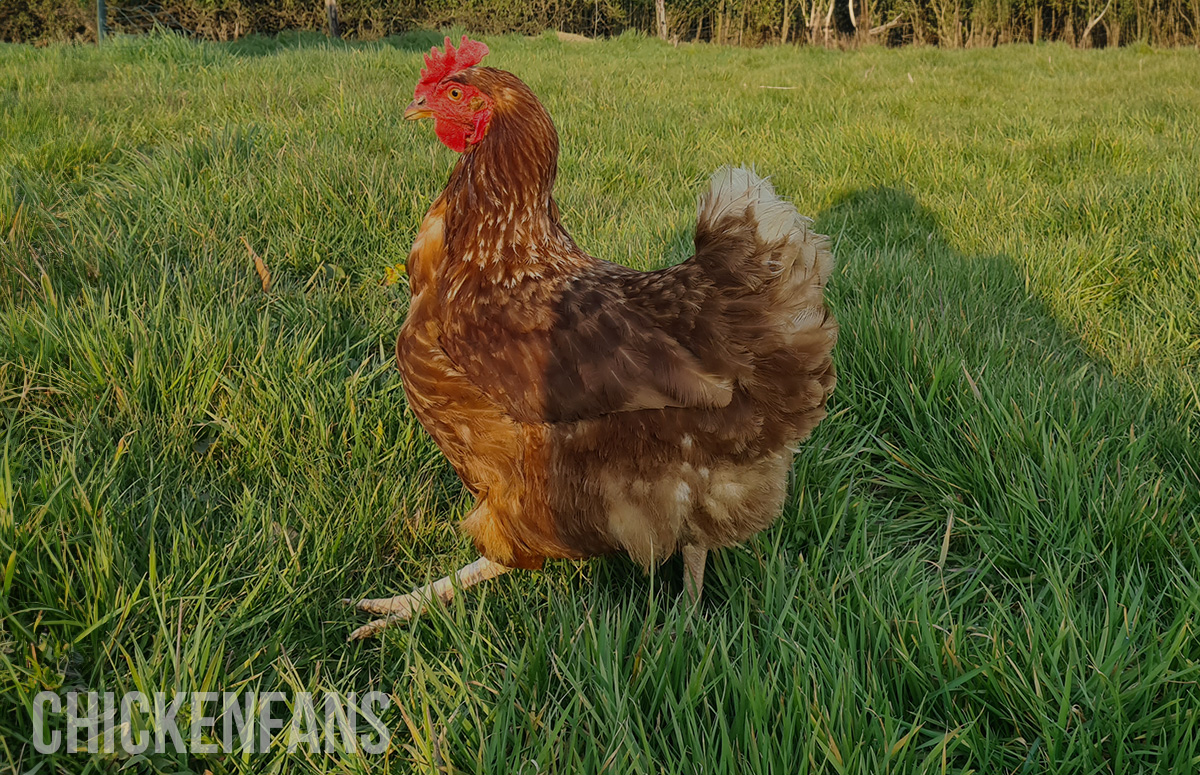
ISA Browns are one of the world’s most popular egg-laying chicken breeds. It is the official name for what most people call a regular brown laying hen. They were bred specifically as egg-laying chickens and are used in the egg industry.
ISA Brown chickens are hybrid chickens. What breeds were used to create this amazing egg layer is a well-kept secret.
ISA browns lay around 320 large brown eggs annually and start laying after only five months of age.
| Eggs | 320 eggs per year |
| Egg Color | Brown |
| Egg Size | Large |
| Weight | 5-6 lbs |
| Hardiness | Cold & Heat |
| Temperament | Docile and friendly |
| Beginner-friendly | Yes |
| Color | Hens: Reddish brown with white feathers. Roosters: white. |
Adult ISA Brown hens have a reddish-brown color and white feathering near the tail, whereas adult roosters are white to yellow-colored.
ISA Brown chickens aren’t a large chicken breed, nor are they small-sized ones. They are medium-sized, with females weighing around 5 pounds (2.3 kg) and roosters around 6 pounds (2.7 kg).
ISA brown chickens are not only famous because of their egg-laying skills but also because they’re extremely low in maintenance and have a great food-eggs ratio.
This makes them a very beginner-friendly chicken breed, suited for any chicken owner, whether you’re new to chicken keeping or not. They are a friendly and gentle breed, never loud or aggressive.
2. Calico Princess
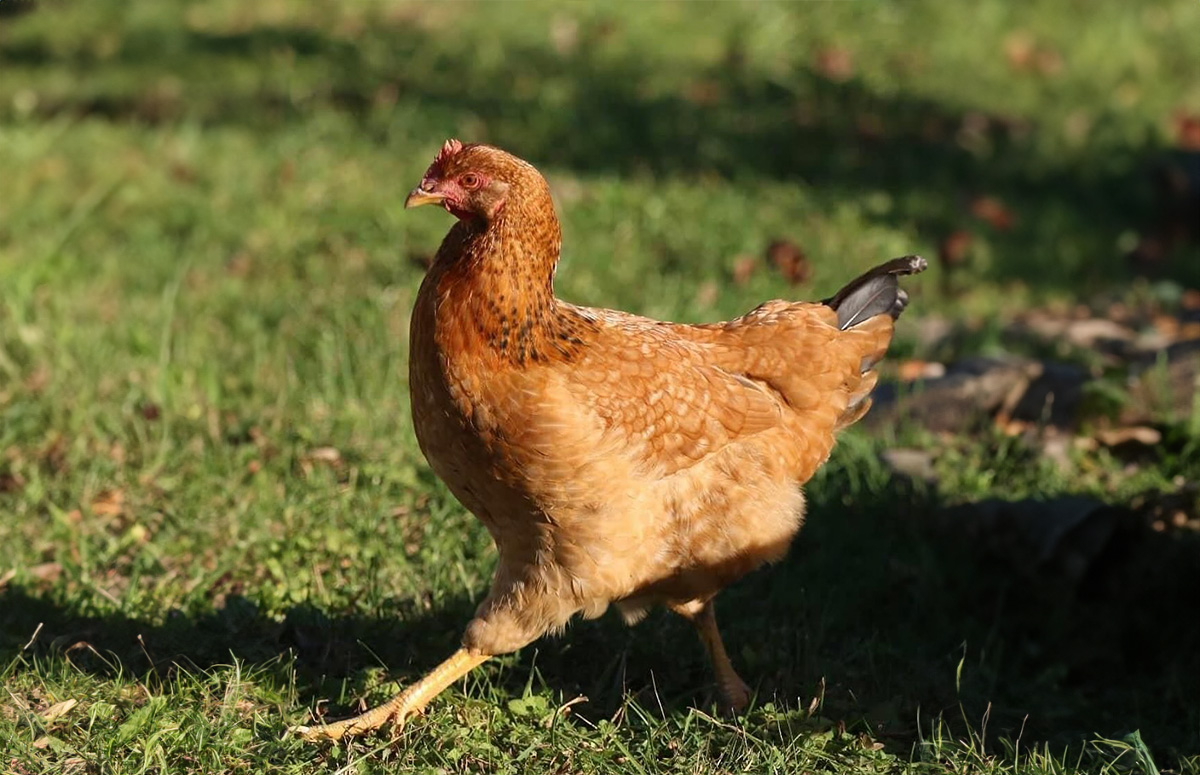
Calico Princesses are large birds with a very attractive orange-brown plumage color. Roosters weigh around 7 pounds (3.1 kg), and hens are tipping the scale at 5 to 6 pounds (2.5 kg).
It is not a chicken breed recognized by the American Poultry Association; it’s a hybrid bird. They result from crossing a Barred Rhode Island Red rooster and a Columbian Sussex hen.
| Eggs | Over 300 eggs/year |
| Egg Color | Brown |
| Egg Size | Large |
| Weight | 5 – 7 lbs |
| Hardiness | Cold and heat |
| Temperament | Docile, low in maintenance |
| Beginner-friendly | Yes |
| Color | Light reddish-orange and white |
The name ‘Calico’ is a marketed retail name referring to the variety of colors on the chicken. The name ‘Calico Princess’ is a trademark registered by Hoover’s Hatchery in September 2021.
A Calico Princess is a good egg layer. They lay over 300 eggs annually. The eggs of a Calico Princess are large-sized, weighing around 2.1oz (62gr), and are brown in color.
Calico Princess chickens are docile and calm birds that are low in maintenance. They don’t need much extra care, only food, water, and shelter. They are very beginner-friendly and an excellent choice for families with small children.
3. Cinnamon Queen

Cinnamon Queens are a hybrid of two well-known chicken breeds: the Rhode Island Red and the Silver Laced Wyandotte. The RIR is the rooster, and the hen is a white Wyandotte with black lacing.
| Eggs | Minimum 250 eggs/year |
| Egg Color | Brown |
| Egg Size | Large |
| Weight | 5.5 – 7.5 lbs |
| Hardiness | Cold & Heat |
| Temperament | Docile, Easy to Care For |
| Beginner-friendly | Yes |
| Color | Reddish brown (hen), White (roo) |
The breed is quite large and heavy, being a dual-purpose breed bred for meat and eggs. Roosters weigh approximately 7.5 pounds (3.5 kg), and hens are tipping the scale at 5.5 pounds (2.5 kg).
Cinnamons are good egg layers and lay between 250 and 300 large brown eggs annually. They’ll start laying at only 16 to 18 weeks old and keep laying during the winter.
The name ‘Cinnamon Queen’ is a marketed retail name; it’s catchy and cute but has nothing to do with the breed except for the color reference.
Overall, Cinnamon Queens are known to be friendly and kind birds, but the roosters can be a bit feisty. Cinnamons are the offspring of Rhode Island Reds and Wyandottes, both social birds but a more assertive breed.
4. Golden Comet
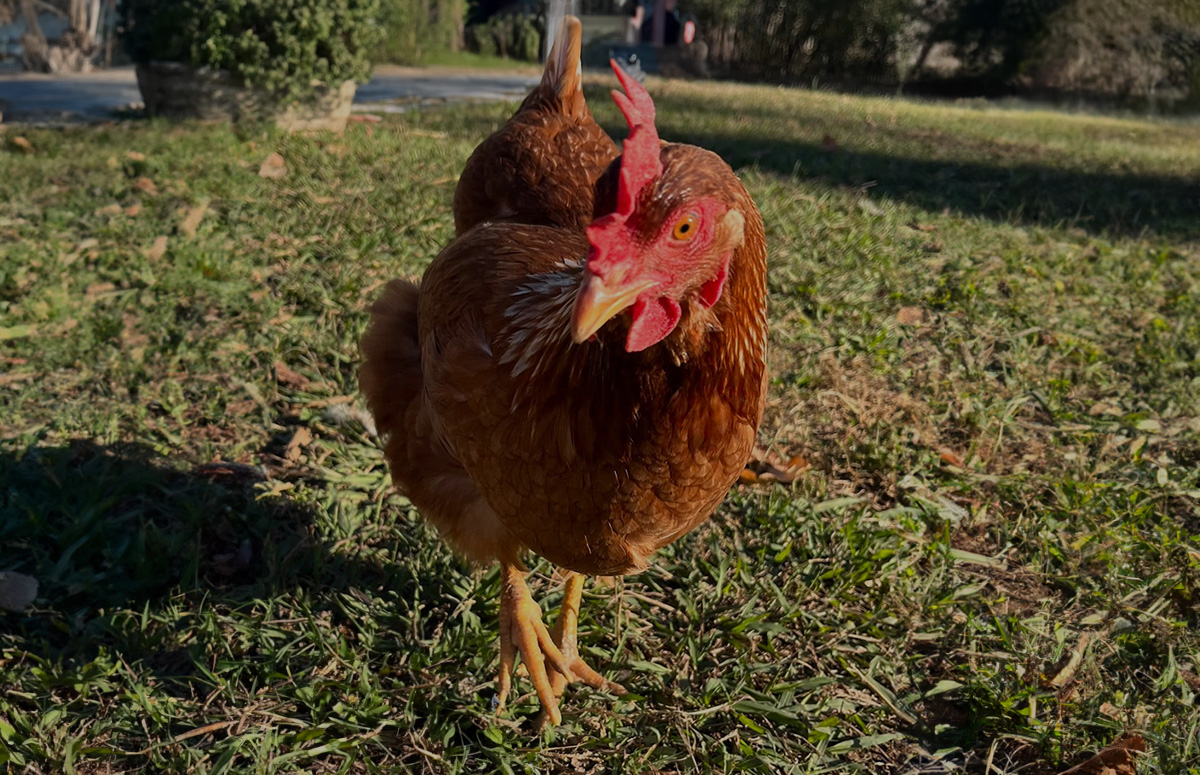
Golden Comet chickens are extremely popular due to their excellent egg-laying skills, beautiful reddish-brown color, and hardy nature. Only the females are brown; roosters are lighter colored, almost mainly white.
| Eggs | Around 300 eggs per year |
| Egg Color | Brown |
| Egg Size | Medium |
| Weight | 4 – 5 lbs |
| Hardiness | Cold & Heat |
| Temperament | Docile |
| Beginner-friendly | Yes |
| Color | Reddish brown (hen), White (roo) |
They are medium-sized chickens, not suited as meat birds because they are small in size. Hens weigh around 4 pounds (1.8 kg), and roosters tip the scale at 5 pounds (2.2 kg).
Golden Comets are excellent egg layers that lay around 300 eggs yearly. That’s up to six eggs per week. Although Golden Comets are smaller-sized chickens, they lay medium to large eggs. But remember, as Golden Comets lay many eggs in their first years, the numbers will drop dramatically after two to three years.
Golden Comets are docile, friendly, and excellent with children. Keeping them in a mixed flock is also not a problem, as they are not dominant or aggressive toward other chickens.
5. Rhode Island Red
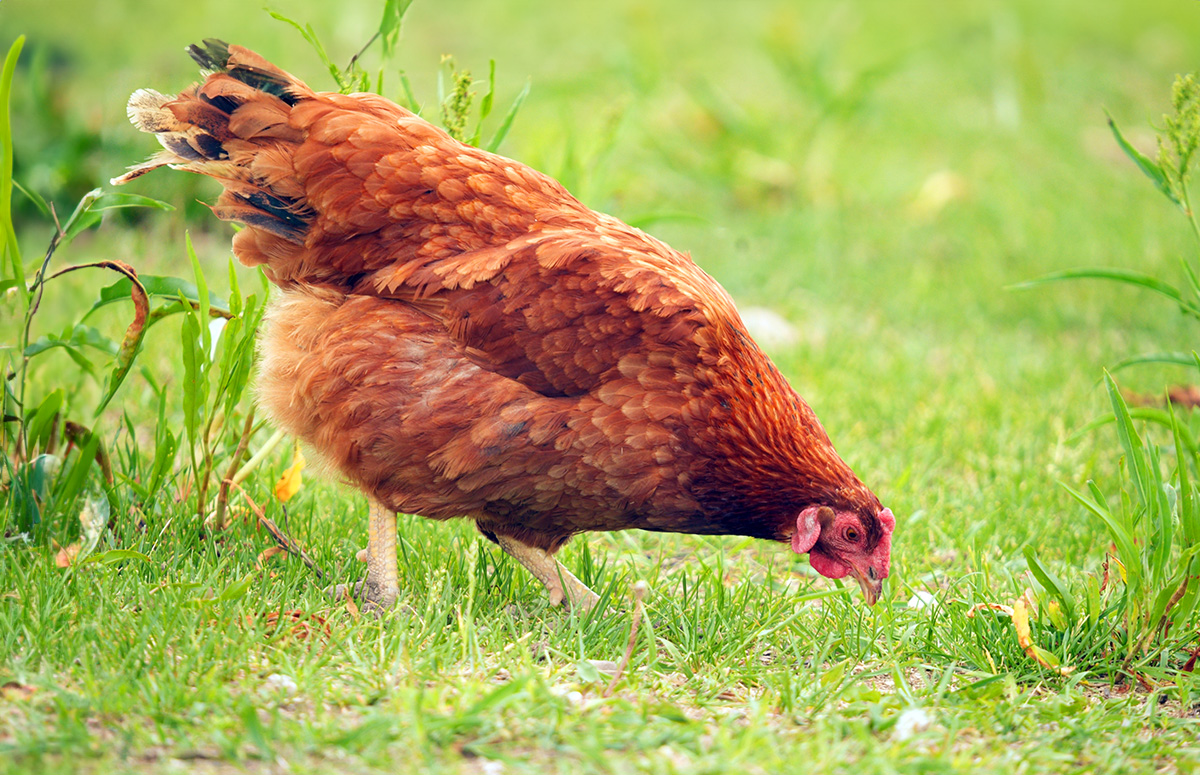
With its distinguished looks and exceptional egg-laying abilities, the Rhode Island Red has become one of the most popular domestic chicken breeds among chicken keepers.
| Eggs | Up to 250 eggs per year |
| Egg Color | Light brown |
| Egg Size | Large |
| Weight | 6.5 – 8.5 lbs |
| Hardiness | Cold and heat |
| Temperament | Assertive and sometimes loud, but friendly |
| Beginner-friendly | Yes |
| Color | Rusty brown |
Rhode Island Reds appear large but are actually medium-sized chickens. A hen weighs about 6,5 pounds (3 kg), and a rooster weighs 8,5 pounds (3,8 kg). The color of their plumage ranges from rusty brown to almost black, with a hint of red.
Rhode Island red lays approximately five eggs per week, more than 250 eggs yearly! Their eggs are large in size and always light brown in color.
They are very friendly and curious and love to be around humans, but they can be assertive toward other chicken breeds. Rhode Island Red chickens are usually on top of the pecking order.
6. Hampbar
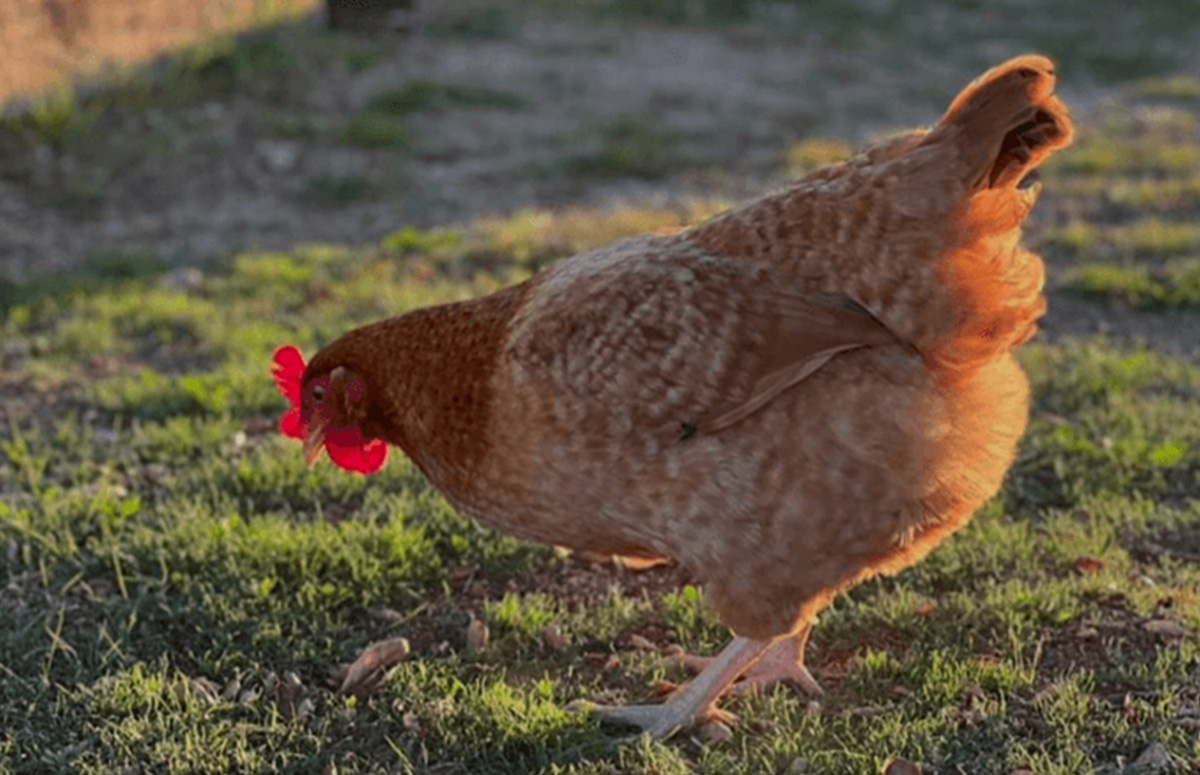
The Hampbar is a dual-purpose chicken and a cross between a Rhodebar and a New Hampshire. It’s an auto-sexing breed that’s quite rare. They were originally developed in Canada in the 1950s. The full name of a Hampbar chicken is Barred New Hampshire.
| Eggs | 240 eggs per year |
| Egg Color | Brown |
| Egg Size | Extra- large |
| Weight | 6 – 7 lbs |
| Hardiness | Cold |
| Temperament | Friendly |
| Beginner-friendly | Yes |
| Color | Varies |
Hampbar chickens are great egg layers, although they are a dual-purpose breed. They lay up to 240 extra-large eggs yearly, that’s almost 5 per week. All eggs of the Hampbar chickens are brown.
As the Hampbar chicken descends from a Rhodebar and a New Hampshire, their personalities are also related. Hampbars are a docile and friendly breed, but the roosters can be somewhat feisty.
The breed does fine in confinement, but always ensure they have plenty of space to roam around and stretch their legs.
7. Olive Egger
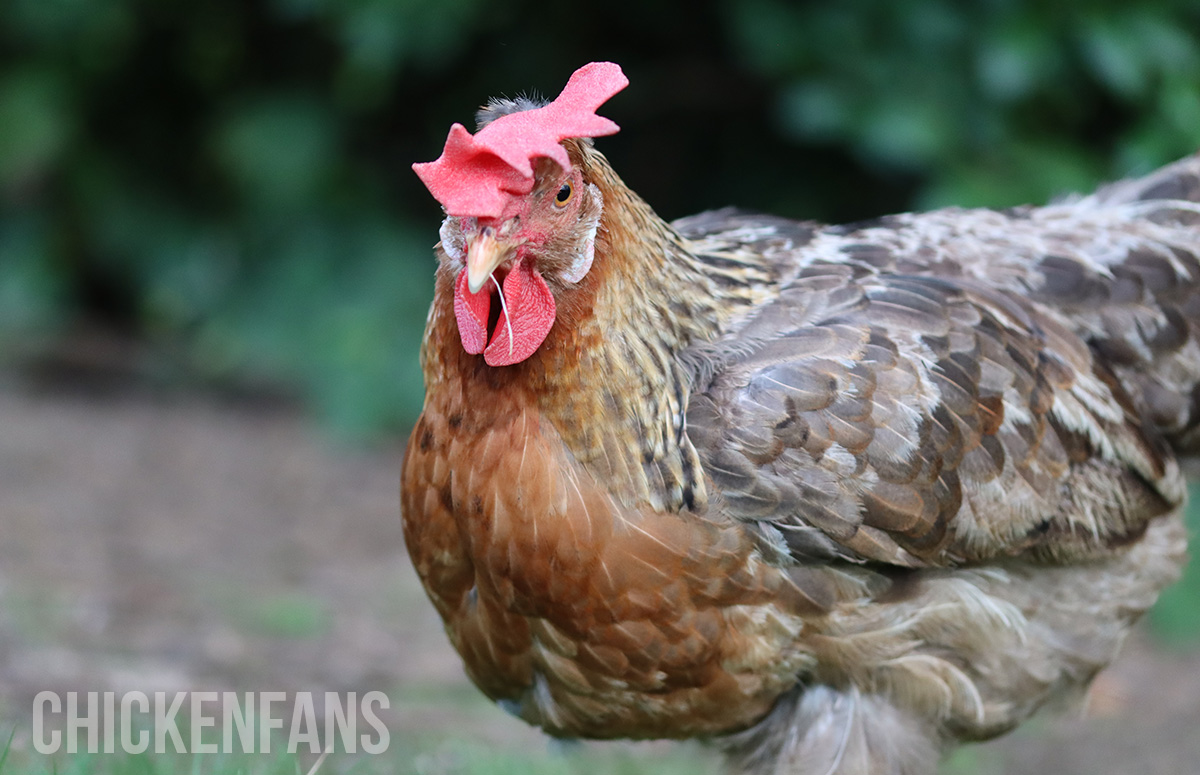
An Olive Egger is not a real chicken breed; it’s a mix of a dark brown egg layer and a blue egg layer. Most Olive Eggers are a mix of Marans chicken and Araucanas, but other combinations like a Cream Legbar and a Barnevelder are also possible.
Because this breed is a mix, they don’t always look the same. But most Olive Eggers have grey-brown feathers.
| Eggs | 230 eggs per year |
| Egg Color | Green |
| Egg Size | Extra- large |
| Weight | 6 – 7 lbs |
| Hardiness | Cold |
| Temperament | Friendly |
| Beginner-friendly | Yes |
| Color | Greyish brown |
Olive Eggers are great egg layers, laying up to 3 to 5 eggs weekly. All eggs are green-colored and large in size. Depending on the strain of your Olive Egger, their eggs can be light green to almost white or a very dark avocado color.
Olive Eggers are quite hardy chickens; they’ll keep on laying during winter months, although egg production may slow down. You’ll be enjoying their lovely colored eggs almost year-round.
8. Easter Egger
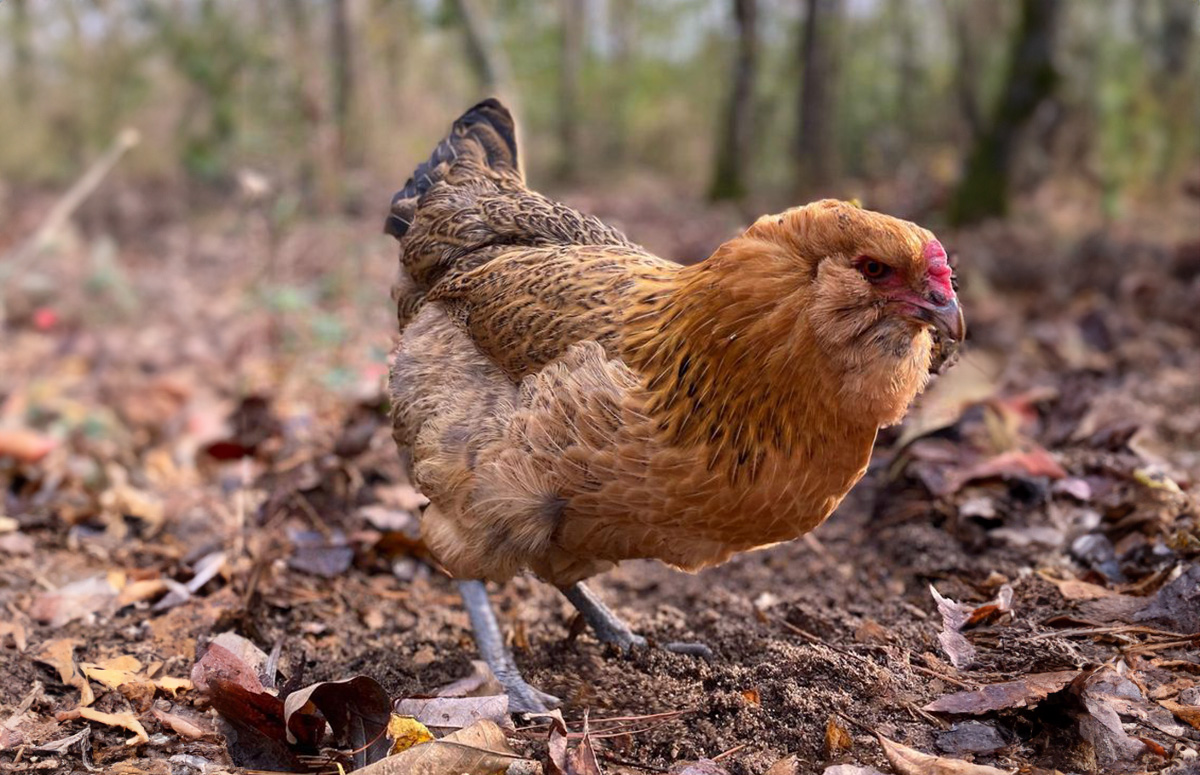
The Easter Egger is also a hybrid chicken, a mix of one parent carrying the blue-egg gene. They differ from Olive Eggers because Olive Eggers are a specific type of Easter Eggers laying only green-ish eggs. Easter Eggers are a mix of one parent carrying the blue egg gene and one parent laying brown eggs.
| Eggs | 200 eggs per year |
| Egg Color | Green and other pastel colors |
| Egg Size | Large |
| Weight | 6 – 7 lbs |
| Hardiness | Cold |
| Temperament | Friendly |
| Beginner-friendly | Yes |
| Color | Varies |
Easter eggers can lay many color varieties of eggs, blue, turquoise, pink, creme, and white. They are great egg layers; not only will they bring a rainbow of colored eggs, but they’ll also supply 3 to 5 eggs per week. That’s around 200 eggs yearly.
If you want to know about green-colored egg layers, check out our article ‘Top 5 Egg Layers That Lay Green Eggs‘.
9. Cream Legbar
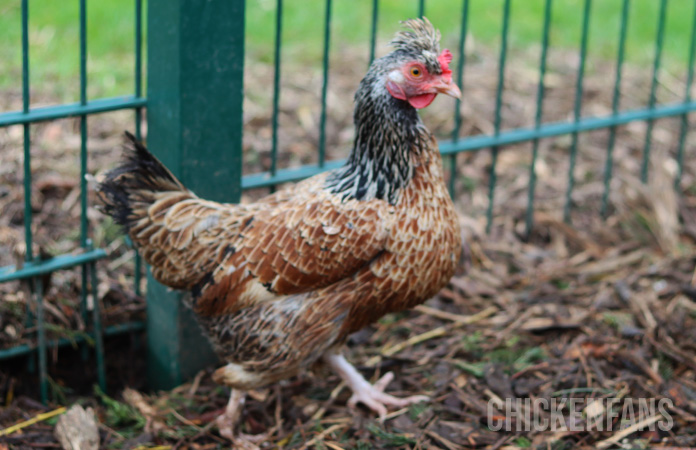
Cream Legbars typically show a blend of cream, gray, and gold-brown feathers, with hens usually being lighter colored than roosters. This breed is extremely popular due to its pastel-colored eggs. These chickens typically have feathers that stick out from behind their combs, leading to their nickname Crested Cream Legbar.
| Eggs | 250 eggs per year |
| Egg Color | Pastel-colored green to blue |
| Egg Size | Medium |
| Weight | 5.5 – 7.5 lbs |
| Hardiness | Cold & Heat |
| Temperament | Friendly |
| Beginner-friendly | Yes |
| Color | Cream-grey-gold-brown |
It is an autosexing breed, meaning that the color or pattern of the feathering determines the sex of a day-old chick. Cream Legbars are the most popular auto-sexing chicken breed in the world.
Cream Legbar hens typically lay around 250 eggs yearly, almost five eggs per week. However, the most remarkable feature of the Cream Legbar eggs is their pastel color. Some hens may lay eggs with more of a greenish tint, while others produce blue eggs.
While the personalities of Cream Legbars vary from bird to bird, they are generally known for being docile and sociable. In general, Cream Legbars are curious chickens and are more aware of their environment than other breeds.
10. Vorwerk
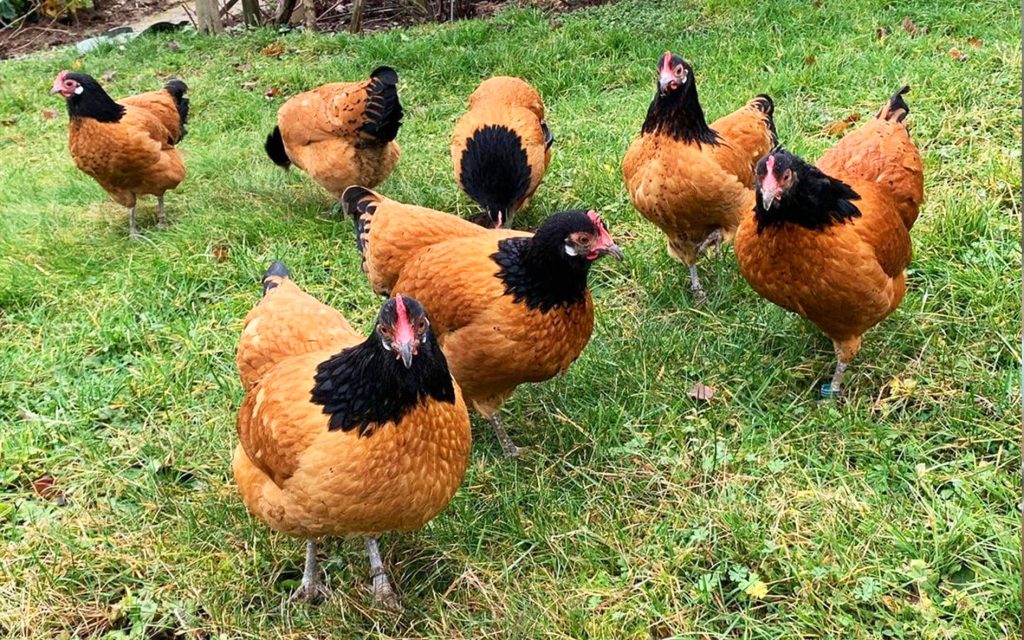
Vorwerk chickens are a German breed with a beautiful black-on-gold pattern. They look like a Lakenvelder, but the ground color of the bird is brown instead of white.
| Eggs | 170 eggs yearly |
| Egg Color | Cream |
| Egg Size | Medium |
| Weight | 5 – 7 lbs |
| Hardiness | Cold |
| Temperament | Active |
| Beginner-friendly | Yes |
| Color | Black-on-gold |
Vorwerk chickens are fast-growing, strong, medium-sized birds. The roosters weigh 6 to 7 pounds (~3kg), while the hens tip the scale at roughly 5 pounds (2-2,5kg).
The standard Vorwerk fowl are ok layers and produce around 170 eggs yearly, which is less than other breeds on this list. The eggs are off-white or cream-colored. Inheriting from Orpingtons, which were used to create the Vorwerk breed, they keep on laying eggs during winter.
These German birds are docile, sprightly, and excellent flyers. They will need more space than most chickens, because they are an active breed.
11. Brown Leghorn
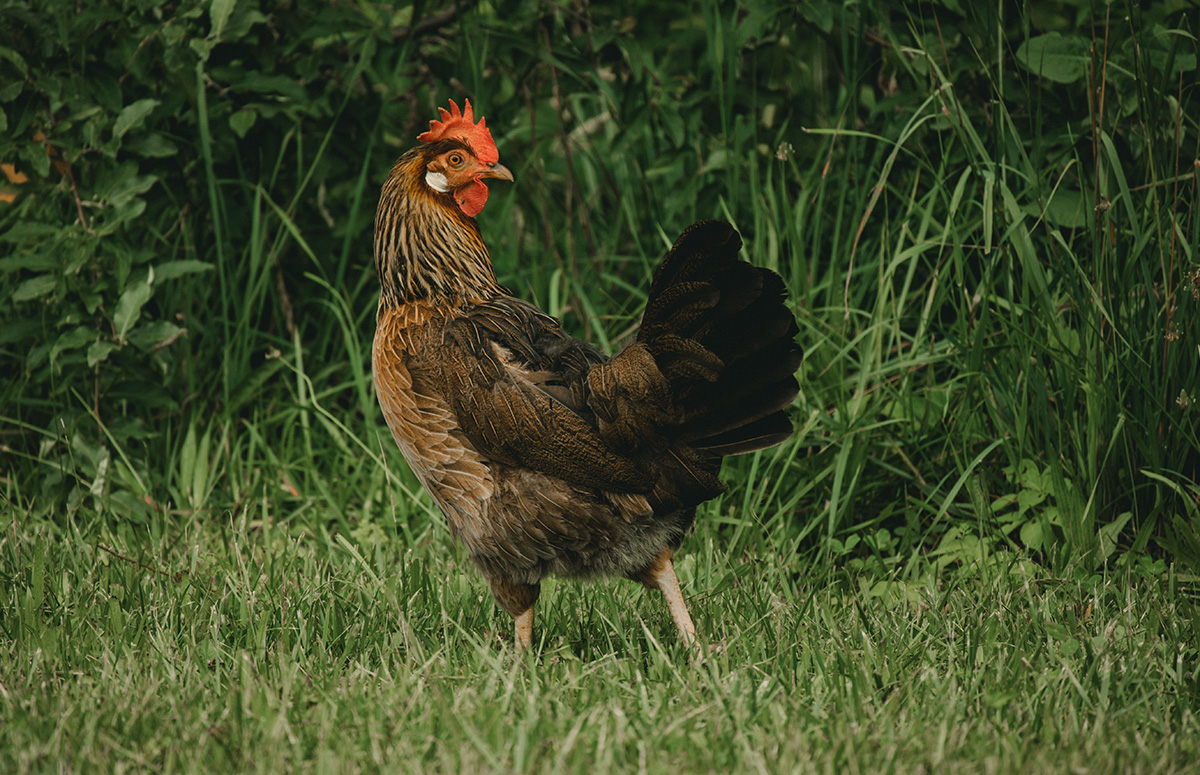
The Brown Leghorn is the colorful nephew of the White Leghorn. The brown Leghorn is a Mediterranean chicken that originates from Italy.
The Leghorn was bred initially in rural Tuscany. Leghorn is the English word for Livorno, a city on the west coast of Tuscany. They come both in standard and Bantam types.
| Eggs | Up to 300 eggs per year |
| Egg Color | White |
| Egg Size | Large |
| Weight | 4.5 – 6 lbs |
| Hardiness | Cold and heat |
| Temperament | Docile, low in maintenance |
| Beginner-friendly | Yes |
| Color | Olive-brown to mahogany |
They are light-weighted, long-tailed birds and excellent egg-layers that can lay up to 300 white eggs annually. The hens have been known to lay well into old age. Even on forage alone, they will retain a high yield.
Leghorns are friendly and kind birds with dynamic personalities. They are fine to be kept in confinement; however, they love to roam and free-range. As they are both heat and cold hardy, Leghorns can be kept in any climate.
12. Buff Silkie
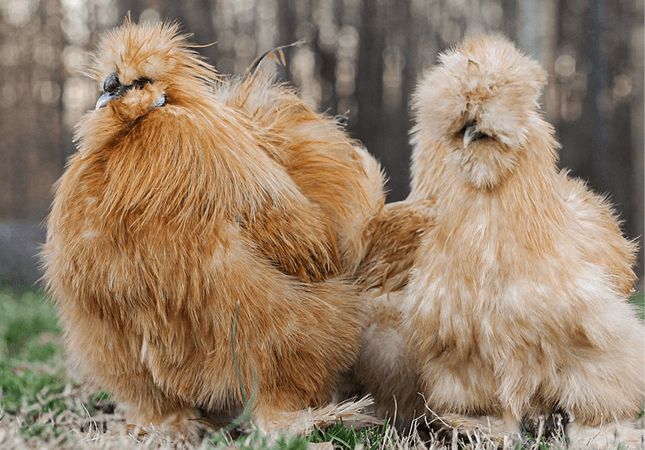
Buff Silkies look like golden fluffballs and are gaining popularity each day. They have a beautiful golden brown color that develops into a deeper gold after every molt. Buff is not the most popular color in Silkies; that honor is for White.
| Eggs | Three eggs per week, but are often broody |
| Egg Color | Cream to tinted |
| Egg Size | Small |
| Weight | 2 – 3 lbs |
| Hardiness | Cold |
| Temperament | Docile and friendly |
| Beginner-friendly | Yes |
| Color | Varies |
They have unusual characteristics and, therefore, are bred as an ornamental bird or to exhibit in poultry shows, rather then for their egg-laying skills.
Silkies are decent egg layers, laying around three eggs per week, which should result in 160 eggs per year. But, Silkies are extremely broody chickens, and egg production will always temporarily stop during broodiness.
At this moment, Silkies are the most popular ornamental chickens worldwide. And due to their extremely high broodiness are often used to incubate other breeds’ eggs. They make excellent pet chickens as they are friendly and sweet birds and can be kept inside the house to keep you company.
13. Buff Orpington
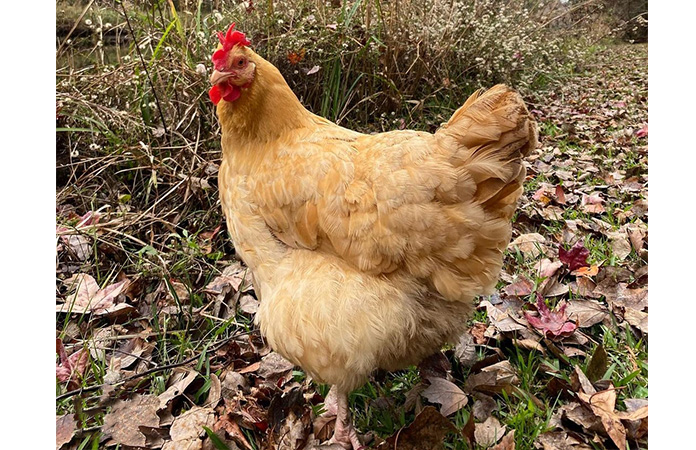
Orpingtons are a large, heavy dual-purpose chicken breed with a kind temperament and are easy to care for. Their easy-going character makes them the ideal breed for beginners or chicken keepers with children.
| Eggs | 240-270 eggs/year |
| Egg Color | Light brown |
| Egg Size | (Extra) Large |
| Weight | 8-10 lbs |
| Hardiness | Very cold-hardy |
| Temperament | Extremely docile, easy to care for |
| Beginner-friendly | Yes |
| Color | Varies, Buff being the most popular |
Buff Orpingtons have a rich golden light brown or golden yellow color, but their feathers can fade when exposed to the sun. After molting, their plumage returns in a deeper, richer color than the ‘old’ feathers. Buff is the most popular color in Orpingtons, but there are others, like, lavender, white and blue.
An adult Orpington hen weighs around 7 pounds (3,2 kg), and an Orpington rooster has a body weight of approximately 9 pounds (4 kg). Orpingtons are huge but have kind and pleasant personalities. This makes them excellent company for hobbyists or chicken keepers with small children.
An Orpington pullet reaches adulthood at the age of 20 weeks and will start laying around that time. They are excellent egg layers and lay approximately five large light brown eggs per week.
14. Salmon Faverolles
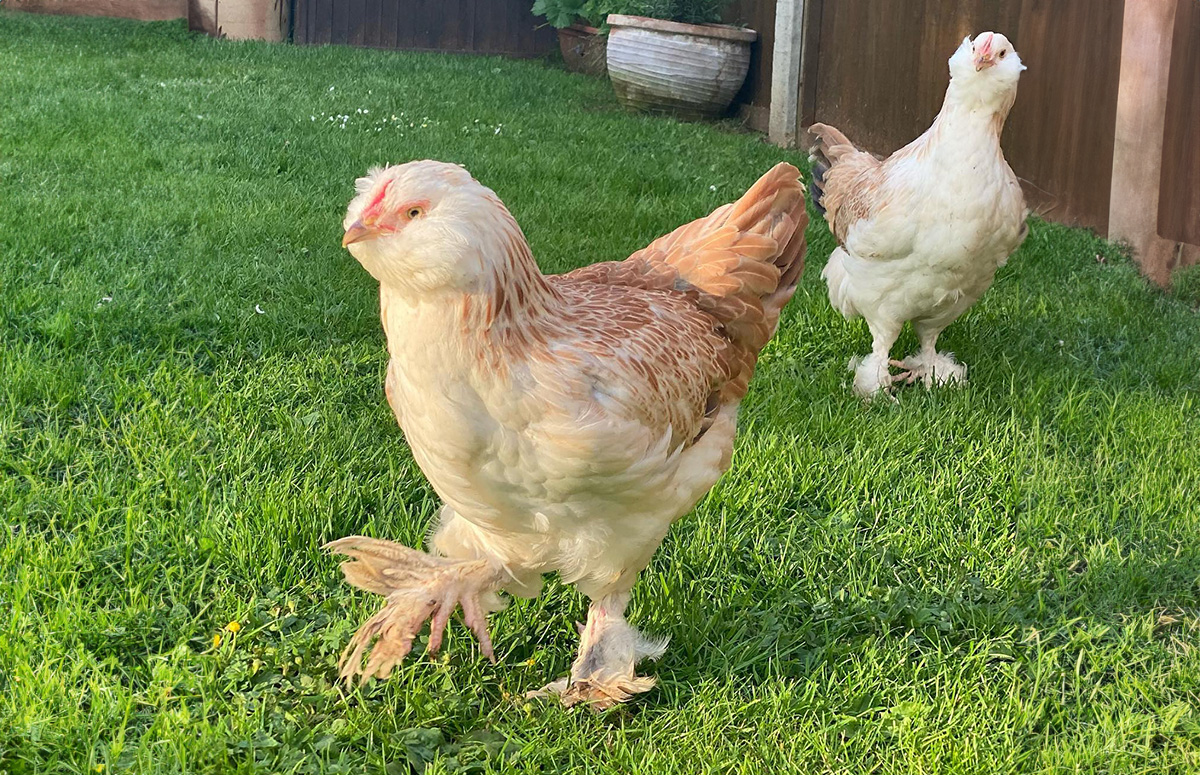
Faverolles chickens have a distinctive look, with their large body, fluffy beard, and muffs. They come in various colors: black, white, mahogany, blue, and splash. But the most popular color is Salmon.
| Eggs | 200 eggs per year |
| Egg Color | Brown to pink |
| Egg Size | Medium / Large |
| Weight | 9-11 lbs |
| Hardiness | Cold |
| Temperament | Docile and friendly |
| Beginner-friendly | Yes |
| Color | Eight official colors, Salmon being the most popular |
Female salmon Faverolles have a lovely brown and cream color, while the males are darker with a (light) brown and black color. The Salmon color is exclusively found on the Faverolles chicken and, therefore, is unique for this breed.
The breed is quite large and heavy, being a dual-purpose breed bred for meat and eggs. The fluffy breed originates in Faverolles, a village in North-Central France.
Faverolles are decent egg layers, laying three to four large eggs weekly. That’s up to 200 eggs per year. They start laying at the age of 20-22 weeks.
Faverolles are genetically predisposed to produce pink blooms that make the egg look pink. A reddish bloom covering a light brown egg creates a pinkish shine.
Faverolles are sweet, friendly, and kind and a great asset to your backyard flock, especially when having small children running around. This gentle nature also makes them an easy target for bullying as they are seldom on top of the pecking order.
15. Golden Laced Polish
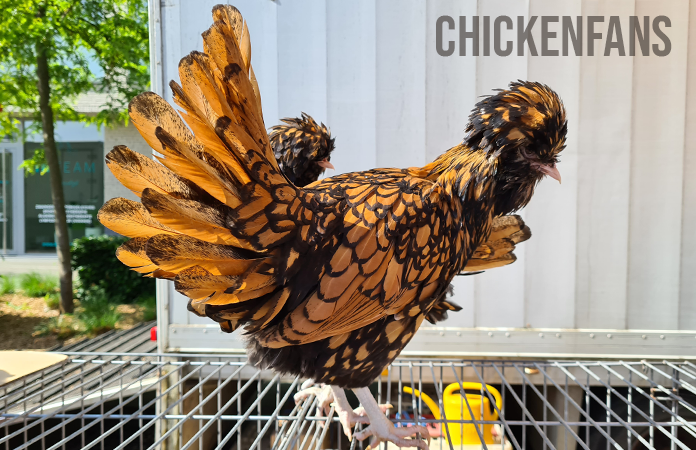
Polish chickens, or Padua chickens, are extremely popular with chicken keepers with children. All Polish have a distinctive tuft or crest of upward-pointing feathers on the head that look like a pom-pom.
Polish chickens are available in several color varieties. The golden-laced variety, with its beautiful golden-brown black-laced, is one of the most popular colors. They are a very popular brown chicken breed.
| Eggs | 150 eggs per year |
| Egg Color | White |
| Egg Size | Medium |
| Weight | 4.5 – 6 lbs |
| Hardiness | Heat |
| Temperament | Friendly but skittish |
| Beginner-friendly | Yes, but need extra care |
| Color | Varies |
Polish chickens are not the most productive chickens, but they still lay a decent amount of eggs yearly. They bring around 150 eggs per year to the table, that’s three to four per week, except during winter. All eggs are medium-sized and white.
They’re a calm and docile breed and a great choice if you have small children. They can, however, be curious and flighty. It’s not uncommon to find a Polish roosting in a three instead of the coop. Because of their massive crest, they can’t see very well. Polish chickens are, therefore, skittish and easily scared.
Summary
With so many breeds to choose from, how do you know which chickens are the best for you? To help you out, we’ve compiled a list of the top 20 brown chicken breeds that are ideal for beginners and excellent egg layers.
There are hundreds of chicken breeds! If you want to get to know them all, rare and common, go to our ‘All Chicken Breeds & Types Worldwide: List of 500+ Breeds‘.
If you want to learn more about chicken breeds, go to our ‘Breeds‘ page.
Related Articles
10 Small Chicken Breeds that are Beginner-Friendly
20 Amazing Giant Chicken Breeds
10 Fluffy Chickens That Are Kid Friendly
10 Beautiful Black Chicken Breeds






















